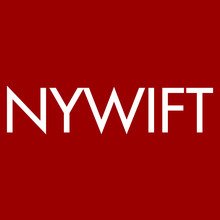Industrial Business Zones | The Foundation of our City’s Economy - Part 1
/Manufacturing has always been an important part of New York City's (NYC) economy, and it continues to be a manufacturing hub. Garment, food, and media production have long been staples of our economy. But today, emerging sectors like bio-engineering and urban technology are quickly adding to that cause. In fact, since the beginning of 2016, NYC’s advanced manufacturing sector has received $270 million in venture capital funding.
Moreover, manufacturing jobs pay well. Average wages for NYC manufacturing workers have grown 12.4% (inflation-adjusted) from 2012 to 2022. According to Zip Recruiter, the average entry-level annual salary for manufacturing jobs in New York City is $62,851.
However, manufacturing jobs are fighting to maintain their viability. In July 2013, there were 76,300 manufacturing jobs in NYC. In July 2023, the number slipped to only 56,700 manufacturing jobs in NYC (St. Louis FED). Moreover, we all know space is limited and at a premium in New York City. According to the City, a series of rezonings of manufacturing space for commercial, residential, and mixed uses in the early 2000s and 2010s reduced manufacturing districts by just over 5%.
Recognizing the value that manufacturing brings to the City’s economy, Industrial Business Zones (IBZs) were created in 2006 to support industrial and manufacturing firms by providing a relocation tax credit of $1,000 per employee and up to $100,000 to industrial and manufacturing firms choosing to move into IBZs.
These zones – all in existing manufacturing zoned space in the outer boroughs – are billed as “safe havens” for manufacturing and other industrial companies. Beyond setting aside room for and providing tax incentives for the manufacturing industry, the IBZs come with other incentives such as:
● Providing financial incentives for maximum growth.
● Broadening access to state-of-the-art technology.
● And, most of all, connecting manufacturers to the limitless potential of the city’s talented workforce.
In all, there are 21 IBZs in New York City.
● Brooklyn: Brooklyn Navy Yard, East New York, Flatlands/Fairfield, Greenpoint/Williamsburg, North Brooklyn, Southwest Brooklyn
● Bronx: Bathgate, Eastchester, Hunts Point, Port Morris, Zerega
● Queens: Jamaica, JFK, Long Island City, Maspeth, Ridgewood, Steinway, Woodside
● Staten Island: North Shore, West Shore, Rossville
In the coming weeks, we will explore how these IBZs function and the benefits they bring to our local communities, our city, and the state at-large. Broadway Stages is proud to play a role in our city’s manufacturing industry. Prior to the pandemic and the recent months-long strikes, the Mayor’s Office of Media and Entertainment (MOME) reported that the film and TV industry supported approximately 185,000 total jobs, $18.1 billion in total wages, and $18.6 billion in total output. This city has a long history of proud, hard-working technicians, and with the help of the city’s IBZs, the manufacturing industry will continue to positively transform and impact our future. Check back for our next blog about the economic impact value attributed to the IBZs in NYC!





